Christiania
On September 4, 1971, a group of enthusiasts in one of the districts of Copenhagen broke down a fence and dispersed the security guards of the old city quarters, which had been occupied by dilapidated military barracks since World War II, where thirty Danish members of the Gestapo were once executed.
On September 26, the territory was declared the Free City of Christiania, with the goal of establishing a self-governing society of independent individuals, each acting for the benefit of the entire community.
Thus began the story of the most unusual fight between freedom and neutrality.
• • •
Christiania is a district of Copenhagen that declared itself as an independent state, not subject to official authorities.
Christiania occupies several blocks, stretching from the Church of Our Saviour in an arc along the canals and the waterfront area.
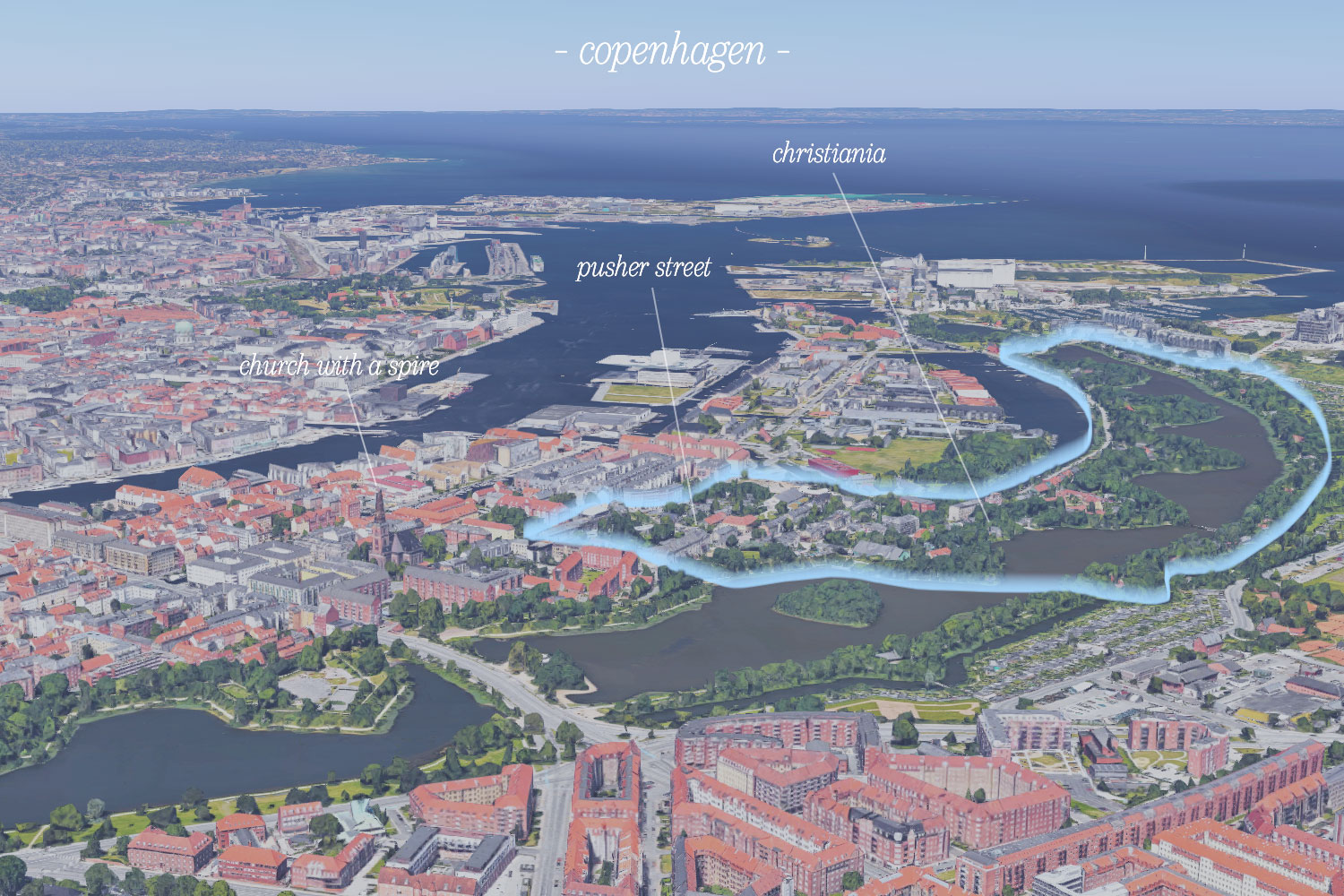
In fact, it is well visible from the church spire, this place squeezed between blocks of five-story buildings and stretching into the distance.
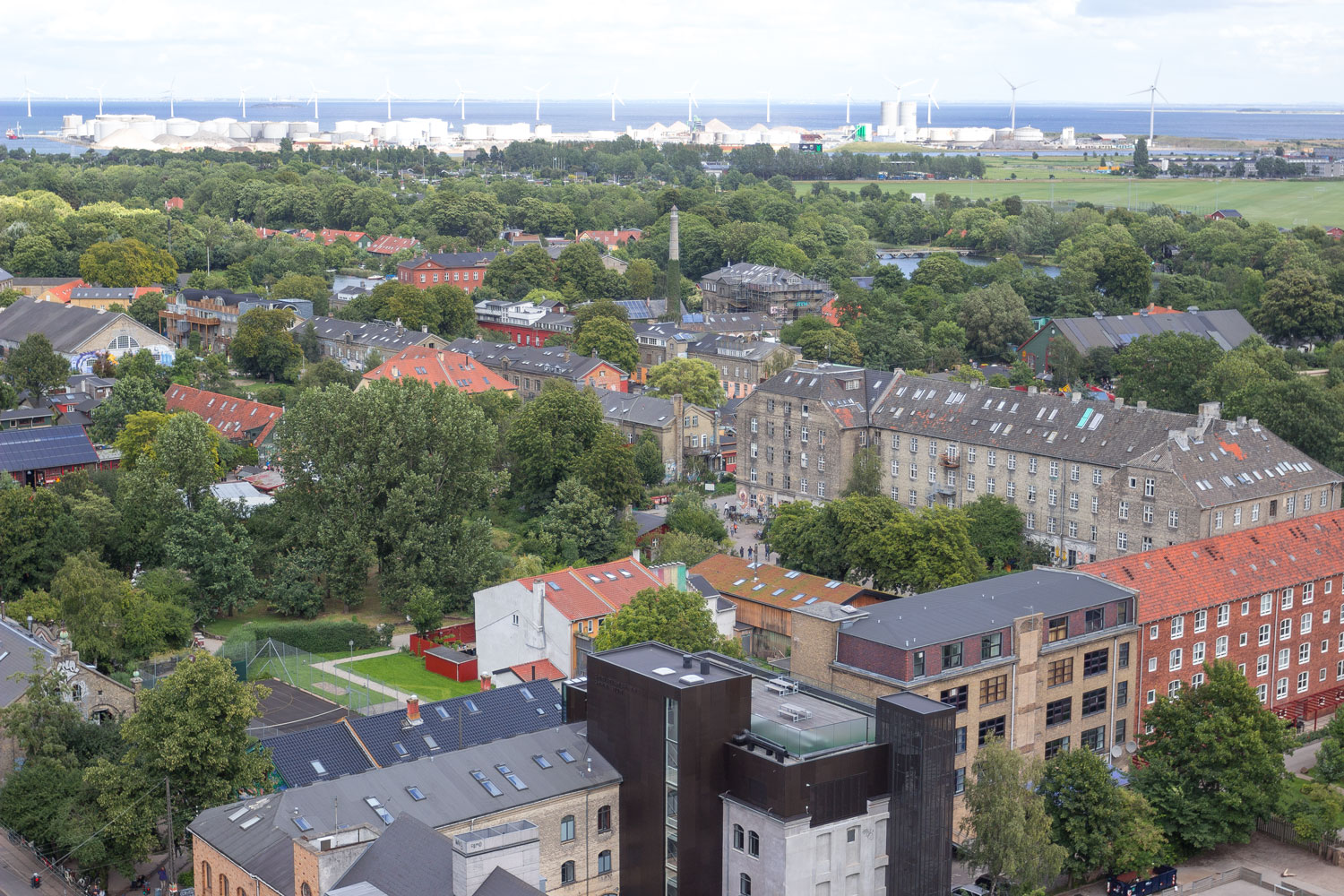
The majority of Christiania consists of typical rural landscapes, which are quite neglected. It’s surprising considering that we are still not far from the center of Copenhagen.

You can enter Christiania from different places — the boundaries of the “state” are, of course, only delineated on the map. And although there is a certain main entrance to the Free City with a sign...

But what’s the fun in going through it right away? You can simply stroll around Copenhagen and find yourself discreetly in a real, wild village.

The village is beautiful.

Through the beauty, after a while, you start to notice that the houses here are all quite unique.

It turns out that almost every house in Christiania is homemade and assembled from makeshift materials.

Christiania, from its very essence, initially became a refuge for the most marginal countercultures. The era of its birth was a time of the decline of the hippie movement and the rise of squatters.
Christiania was created precisely by them and still remains a powerful community of anarchists, pacifists, hippies, beatniks, Rastafarians, simple destitute individuals, primitive communists, and other fringe countercultural enthusiasts.
That’s why the local houses are cobbled together, glued, and assembled from heaven knows what — everyone who couldn’t afford or didn’t want to afford proper housing ended up on idle land.
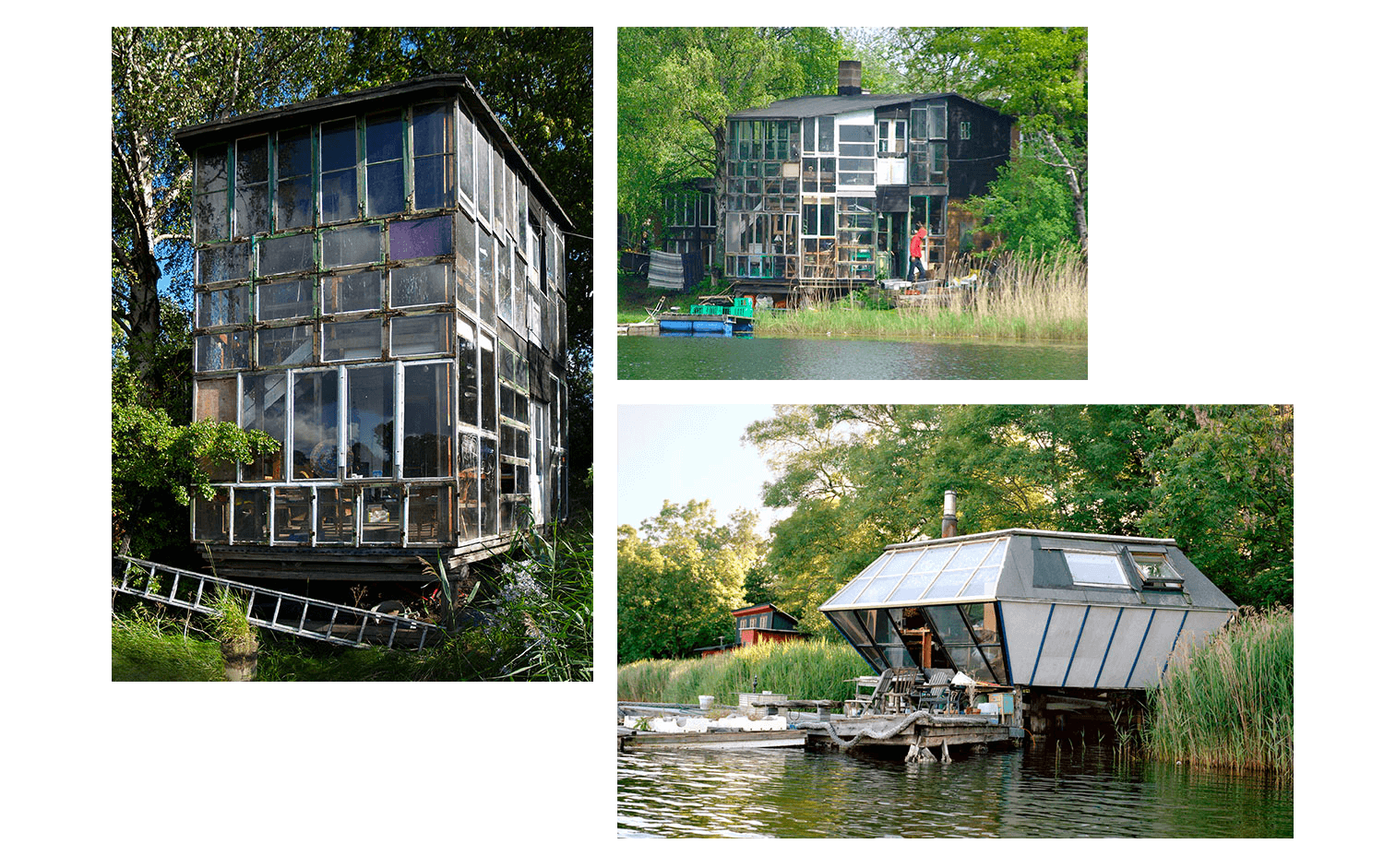
Surprisingly, among this self-built construction, remarkable specimens can be found.
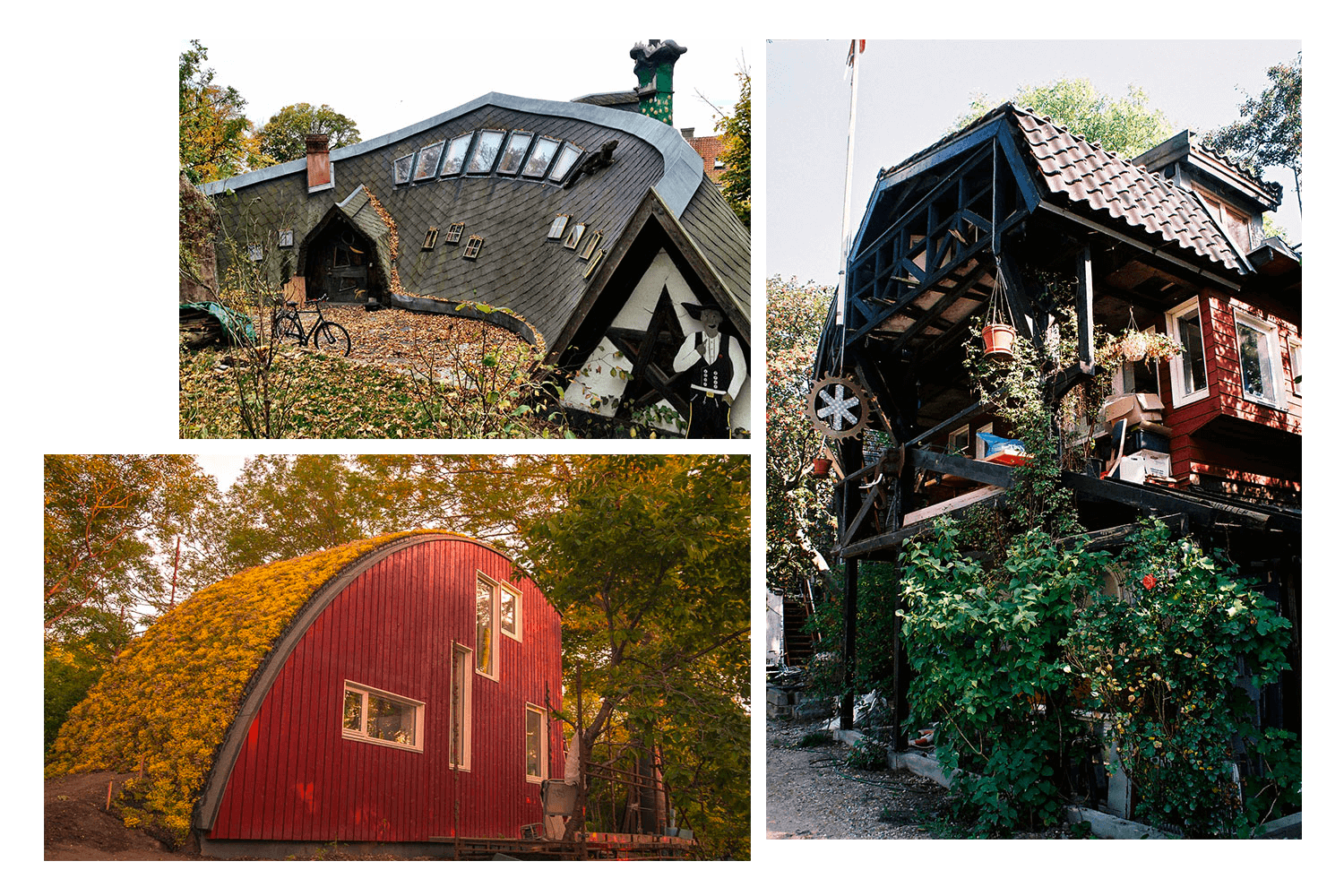
In most parts of Christiania, there are no proper roads. To be honest, who would bother building and maintaining them here? It’s mostly gravel, and if there is any asphalt, it’s very old.
But it’s soulful.

Closer to its center, Christiania becomes less like a village and more like a territory of a factory captured by hipsters: brick houses connected by passageways, iron hangars, gatherings of bomber jackets, dense traffic of bearded individuals on old bicycles... Yeah, something like Moscow’s “Flacon,” in short.

Some former hangar converted into a playground for children.
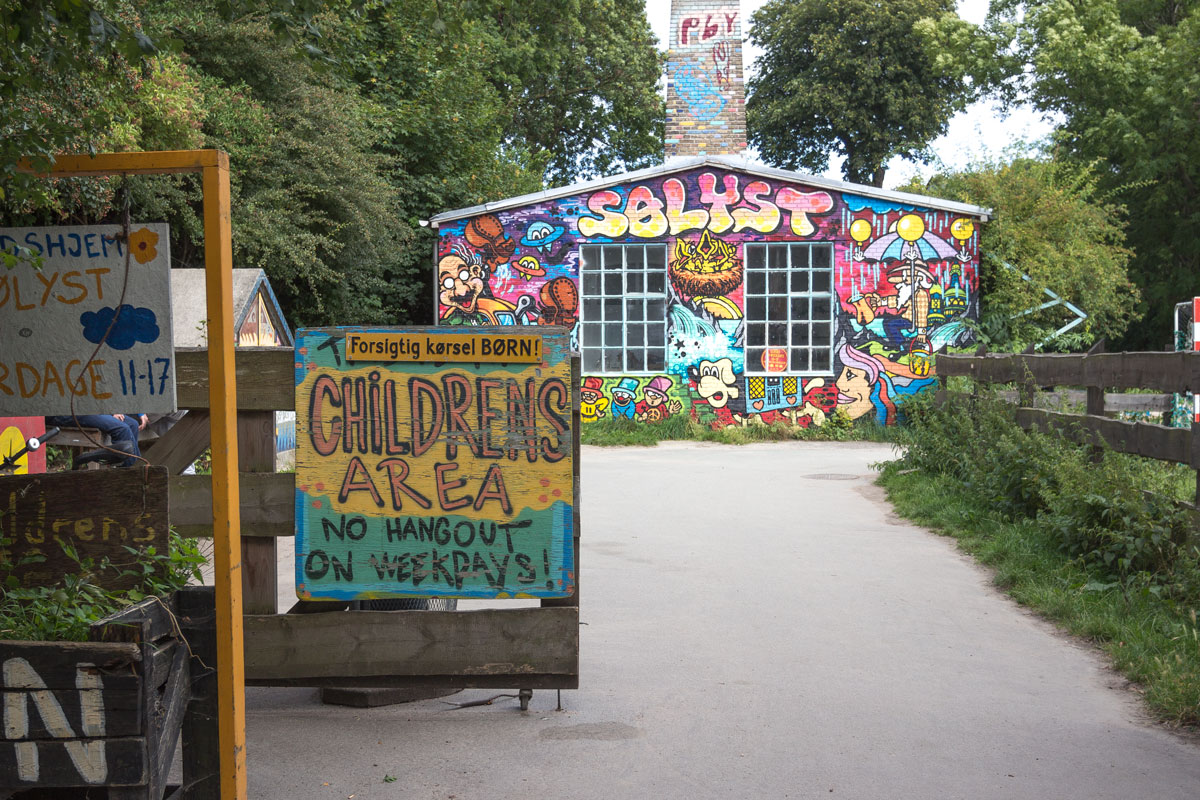
A car from the second “Half-Life.”

An awesome bicycle with an original design.

Someone even rides those here.

Bombers are at work.

The local audience.

Street art.


Alright, alright, I’ve bored you enough with my chatter. Everyone understands the purpose of this story, after all.
Christiania is the only place in the world where massive chunks of hashish and giant-sized cannabis buds are openly and brazenly sold.
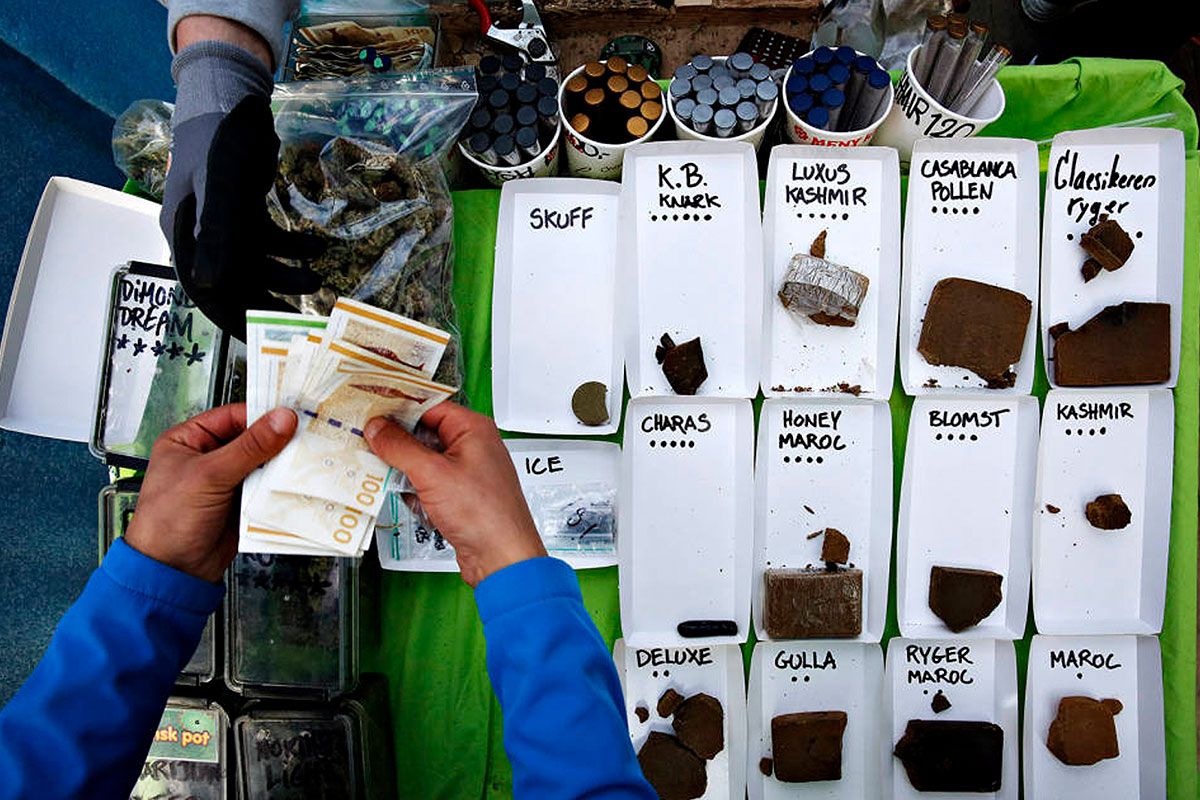
No, damn it, what else could you expect from a gathering of destitute anarchists and half-assed hippies? That they would grow flowers?
Initially, the Danish government didn’t make a big fuss and allowed all this fuss with the “free city.” Saying, let it be a social experiment. Let’s see where it leads.
Over time, Christiania became increasingly adorned with makeshift shanties and began to attract more and more free-spirited artists, musicians, and other nonconformists. Ultimately, it also absorbed hordes of drug addicts and psychonauts who couldn’t fit into cozy Danish condominiums and sought a more gritty environment.
Christians were delighted by such an influx: homeless drug addicts were received with great love and care here. In other words, the unrecognized state quickly grew into a kind of den on the scale of half the city. The Danish authorities, by the way, also looked upon it with tenderness: finally, they themselves did not have to deal with these junkies, the “experiment” was successful.
In fact, drug trafficking has been taking place in Christiania since its inception. Even worse than now: they sold not only marijuana but all other heroins. At that time, living conditions were far from cozy makeshift houses. Heroin addicts generally lived in abandoned Danish panel buildings without doors and bathrooms, sleeping on bald mattresses together with rats and filth, which often led to their own demise.
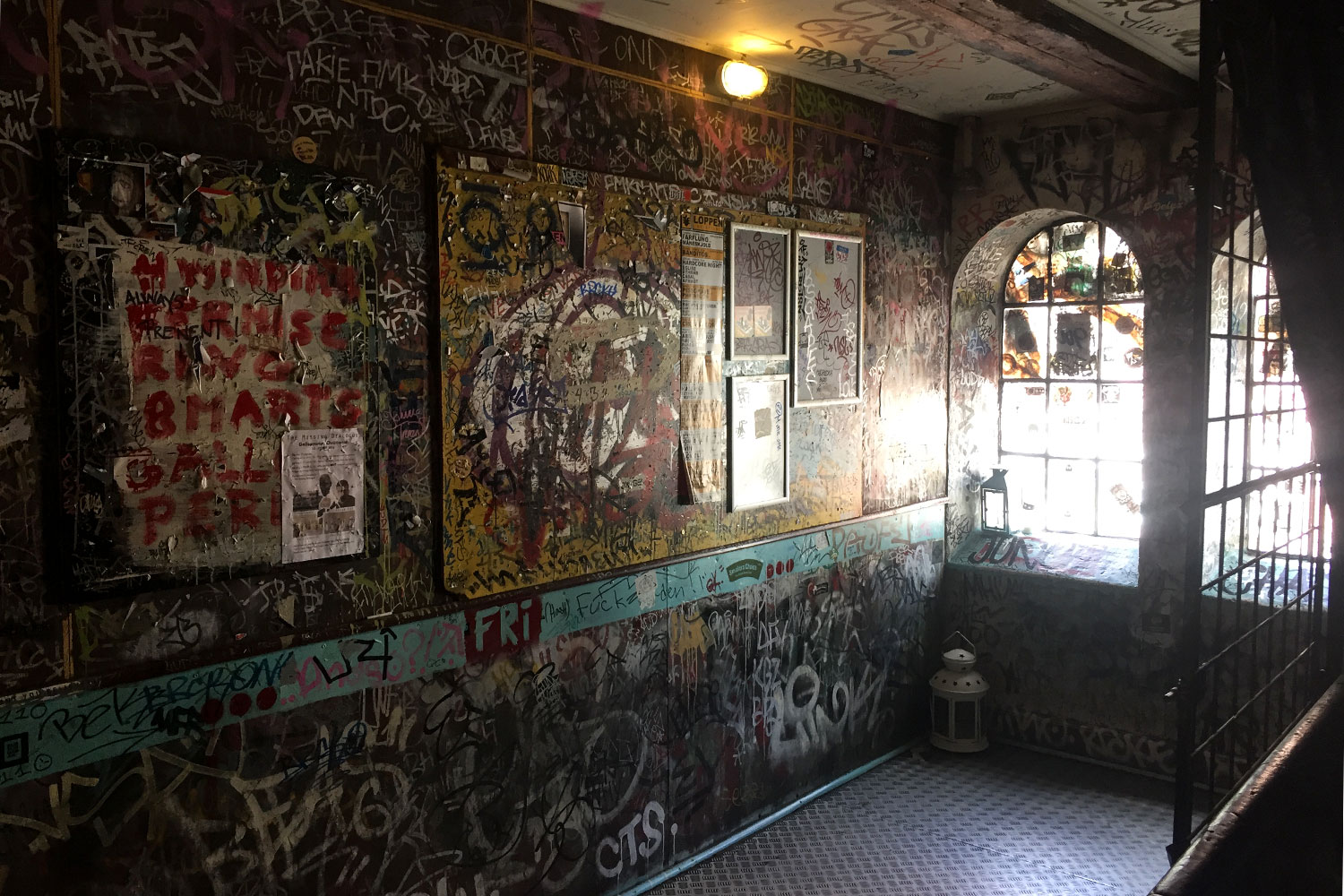
When an indecent number of free-spirited artists started dying from overdoses, the Christians decided to put an end to the trade of hard drugs and henceforth only sell marijuana. In honor of the deceased heroin addicts, they designed a whole infographic on the former drug den highlighting the harm of heavy narcotics: like, marijuana is acceptable, but injecting is a big no-no!
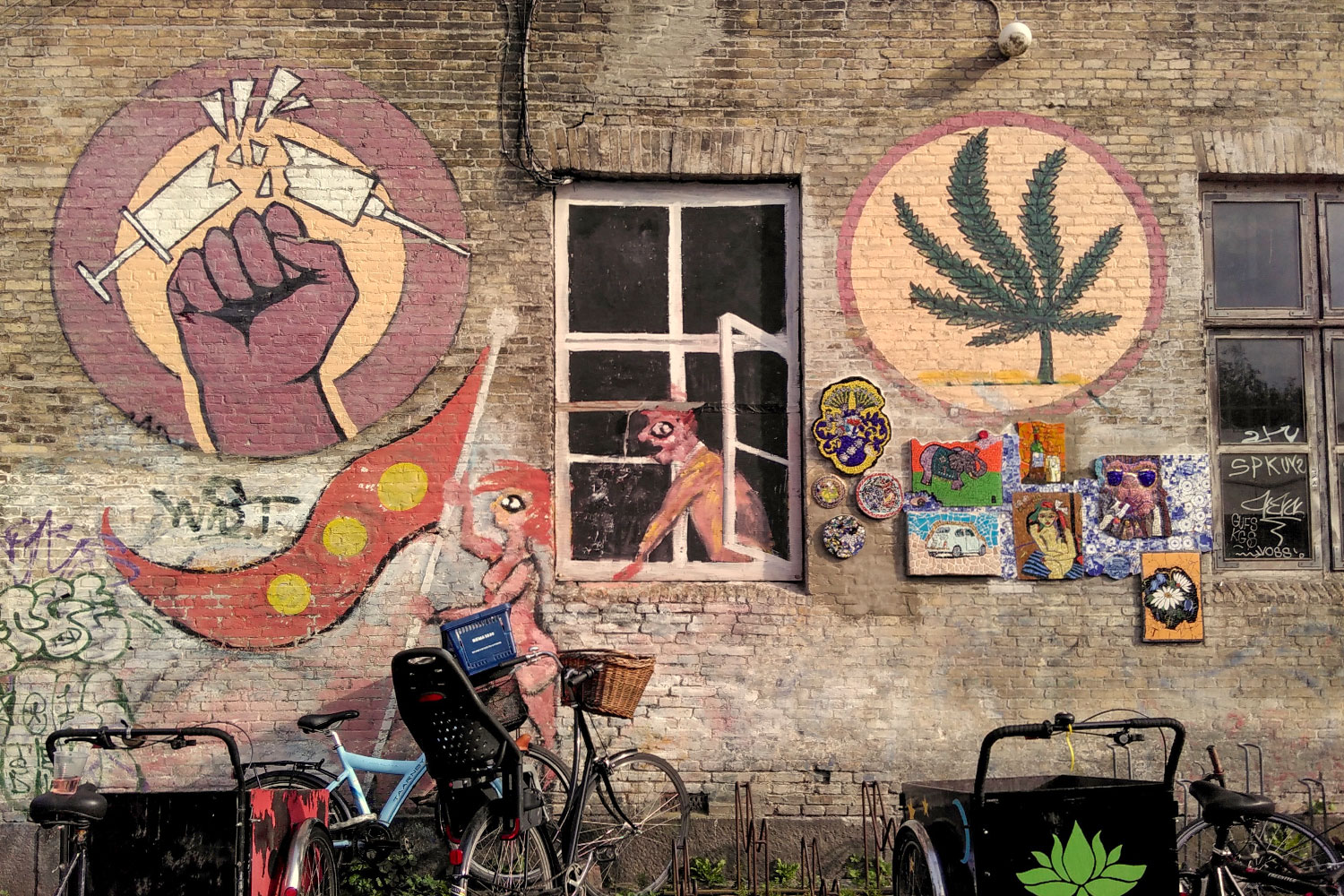
And, in general, the self-regulation of the free community would have continued in its own way if it weren’t for the bikers who arrived in Christiania in 1984 and almost sparked a civil war over the right to trade marijuana. After a couple of dismembered bodies were discovered in an underground space, the Danish police intervened in this war and gave everyone a good beating. Since then, the fervors in Christiania have calmed down somewhat.
Now “Pusher Street” is in its place. It is strictly forbidden to take photos in this part of Christiania. A huge crossed-out sign is the last border checkpoint where they won’t immediately punch you in the face for having a camera.

Of course, I tried to take some photos secretly. I managed to capture a shot where the drug dealers’ tents were barely visible, but instantly a man approached me and politely asked if I was sure I wanted to go to my hotel with a lens in my rear orifice. I quickly informed the gentleman that I was not interested at all and deleted the photograph.
Then I decided that I would be able to capture Christiania from the church spire and climbed up there. But it was pointless. The entrance to the market was visible, but the tents themselves were cleverly concealed.

Then I thought that, in theory, I could buy glasses with a built-in camera, but they either had terrible image quality or the camera was too conspicuous. So, I proceeded to take photos of police raids instead.
Entrance to the market.
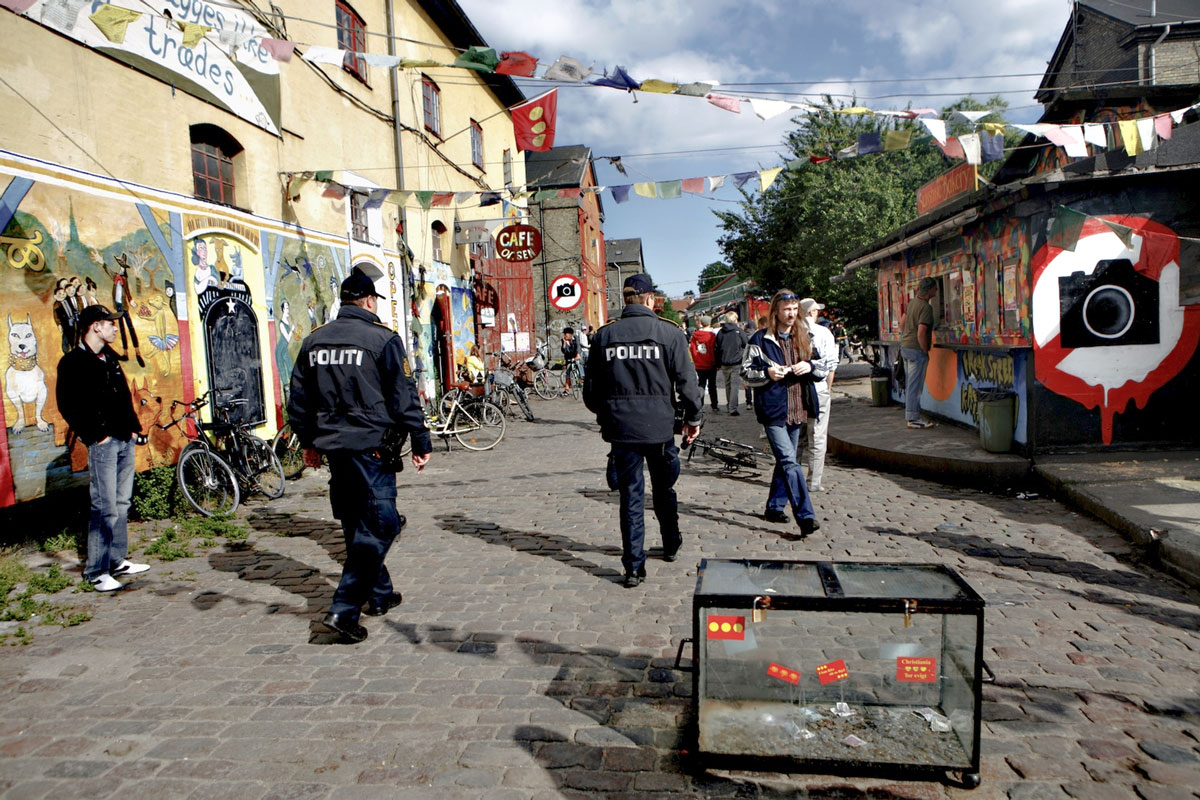
Table with hashish and the demolition of tents during a raid.
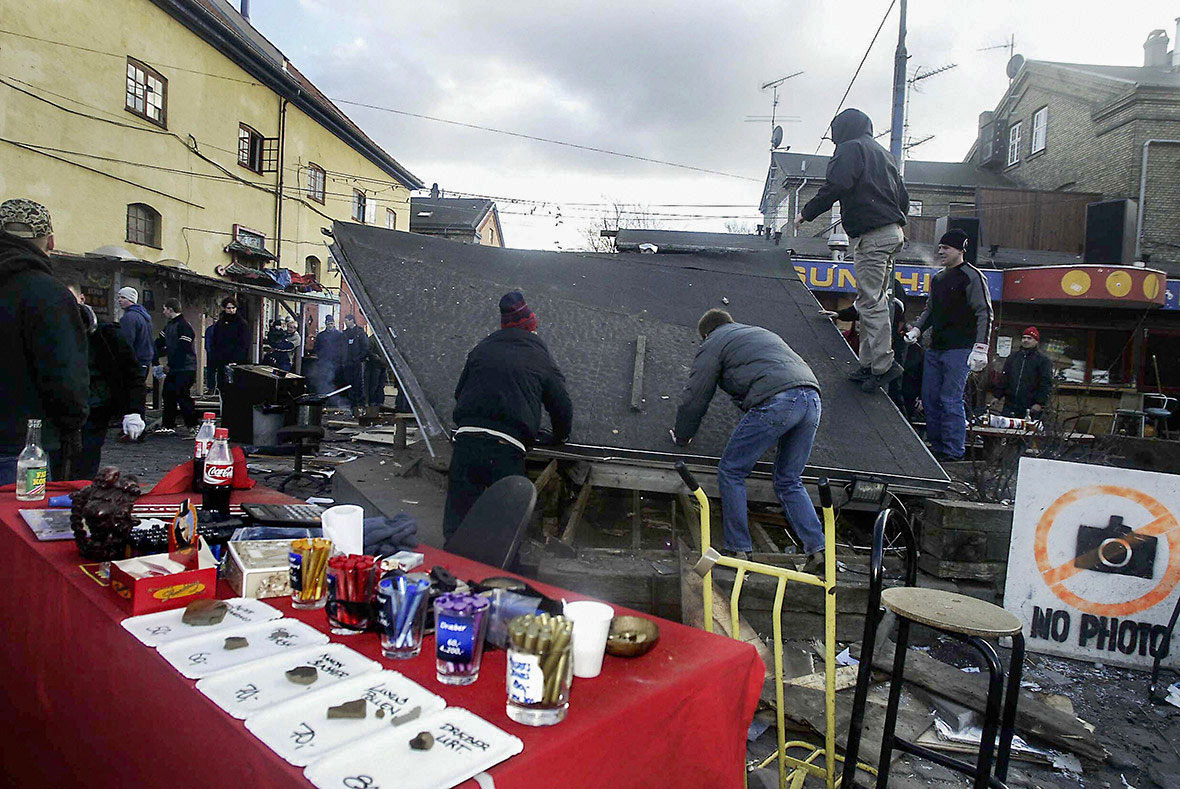
Pusher Street is a very short street, about fifty meters long. Along this stretch, tents with hashish and marijuana are set up on both sides. These tents are carefully covered with awnings and canopies, making it impossible to discreetly photograph them even from the windows of neighboring houses.
In addition, near Pusher Street, it is not allowed to not only take photos but also take selfies, look at your phone, make phone calls, or send text messages. In fact, even running here is prohibited to avoid causing panic!
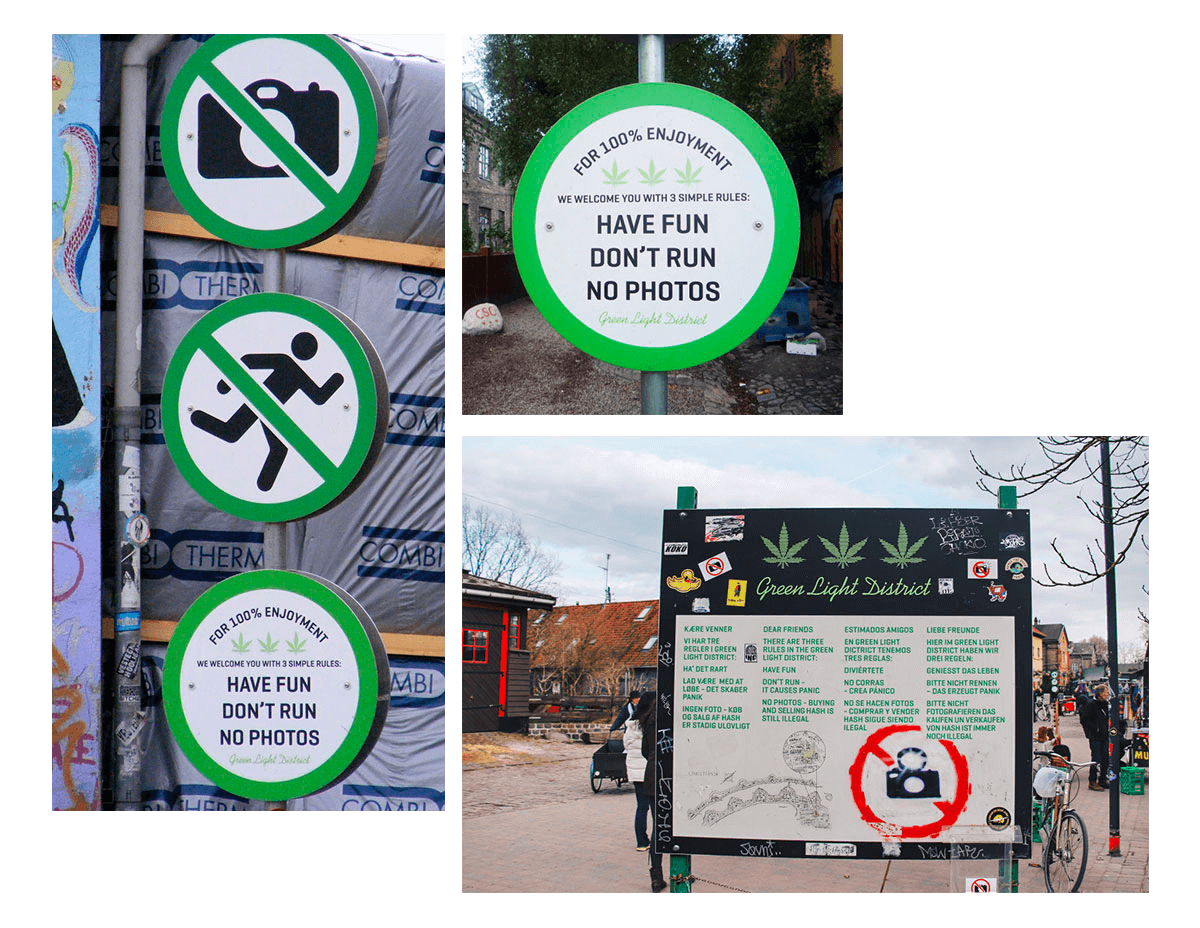
The market is constantly monitored from all sides by several guys on lookout, so don’t even attempt to point the camera at the tents. There have been cases where equipment was simply smashed, and one journalist left Christiania without clothes.
Capturing the dealers themselves is the most challenging part; they are well covered and finding photographs for understandable reasons is also impossible. In general, they have a rather cinematic appearance. Their clothing is of dark, solid colors, making it difficult to identify them. They always wear a hood on their heads, and their faces are covered with a mask that conceals their mouth, nose, and almost reaches their eyes, resembling an Arab burqa. They wear gloves on their hands to avoid leaving fingerprints.
Full-fledged secrecy. It feels like being in a spy action movie. It’s genuinely intimidating to look them in the eyes.
In the photograph, there is a Danish nationalist wearing a similar mask.
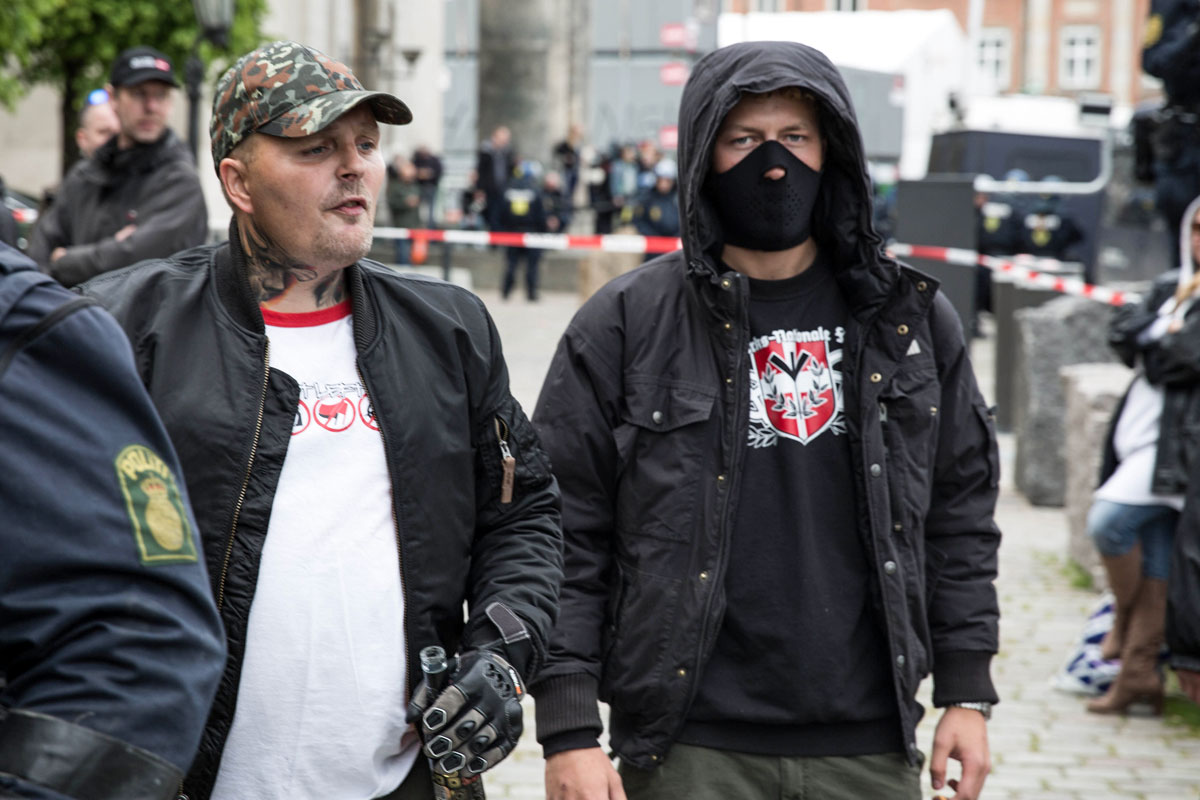
Work gloves.
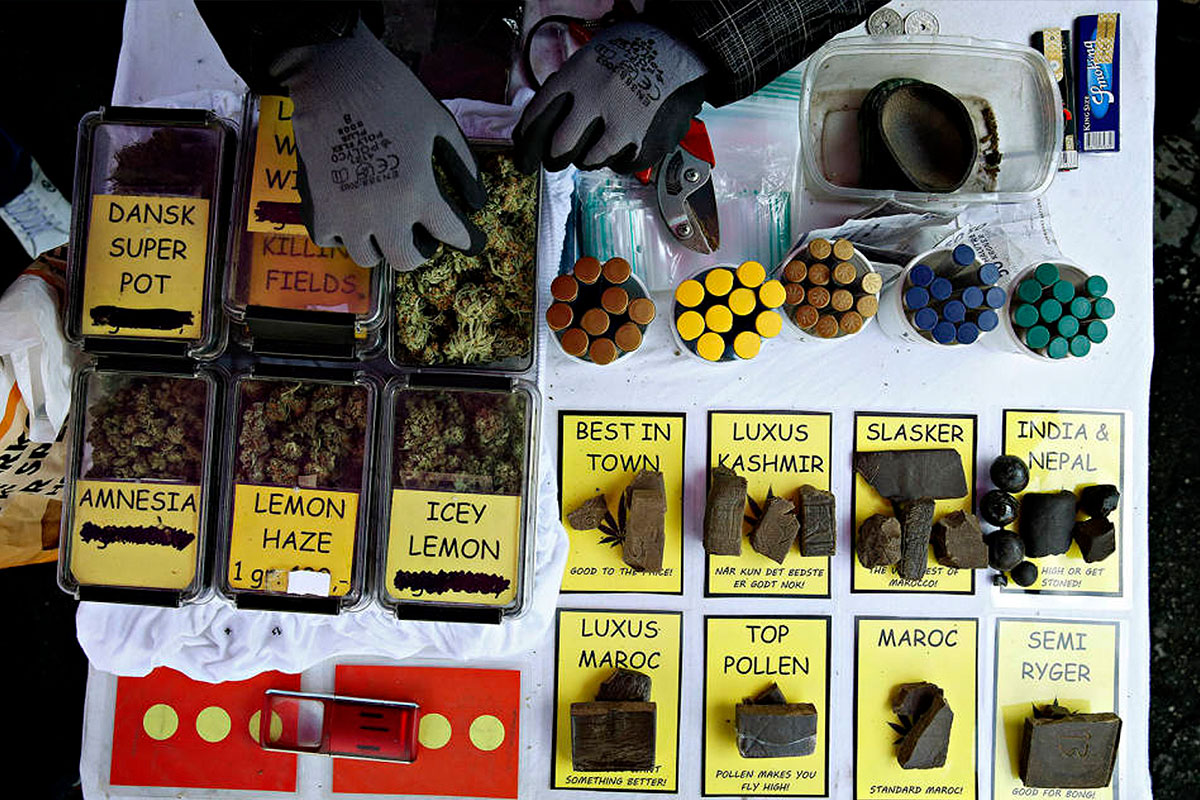
In the market in Christiania, a wide range of various types of cannabis and hashish is sold, as indicated by the labels. Whether these are just names or if there are serious deliveries from around the world to Christiania is unclear. It seems unlikely without the support of authorities.
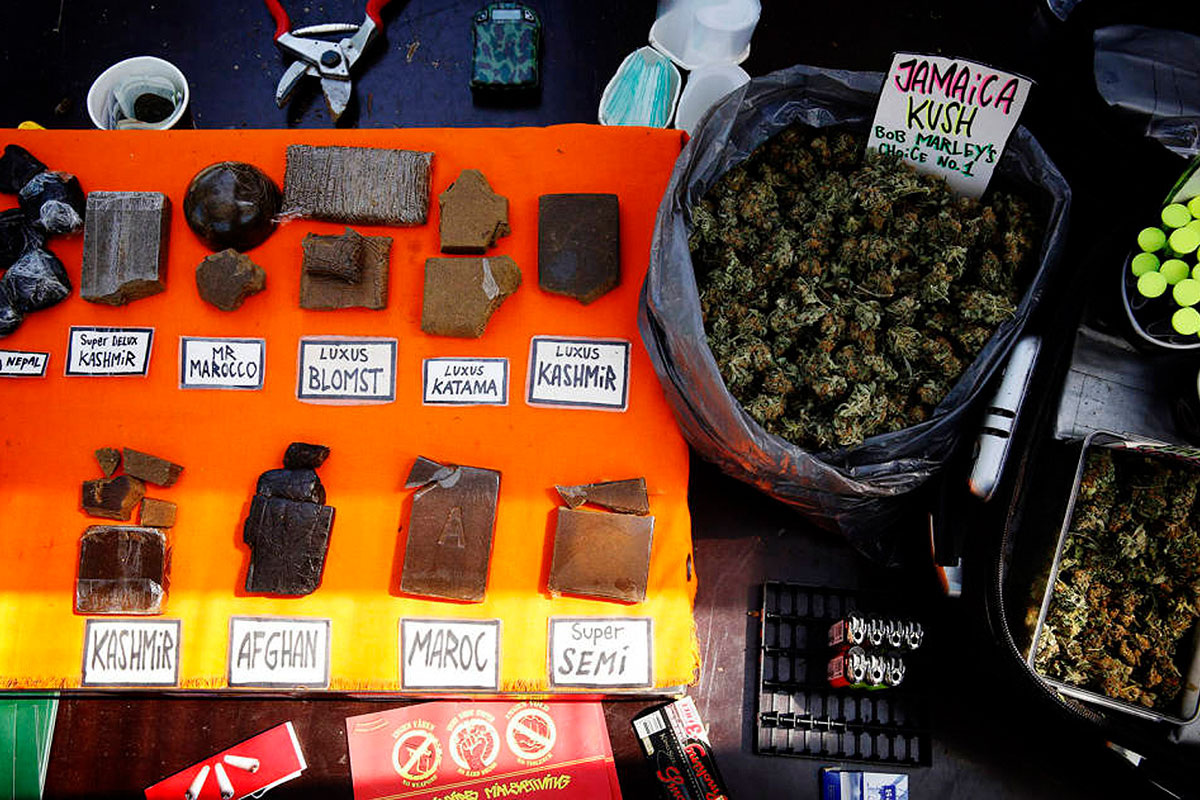
Scales.
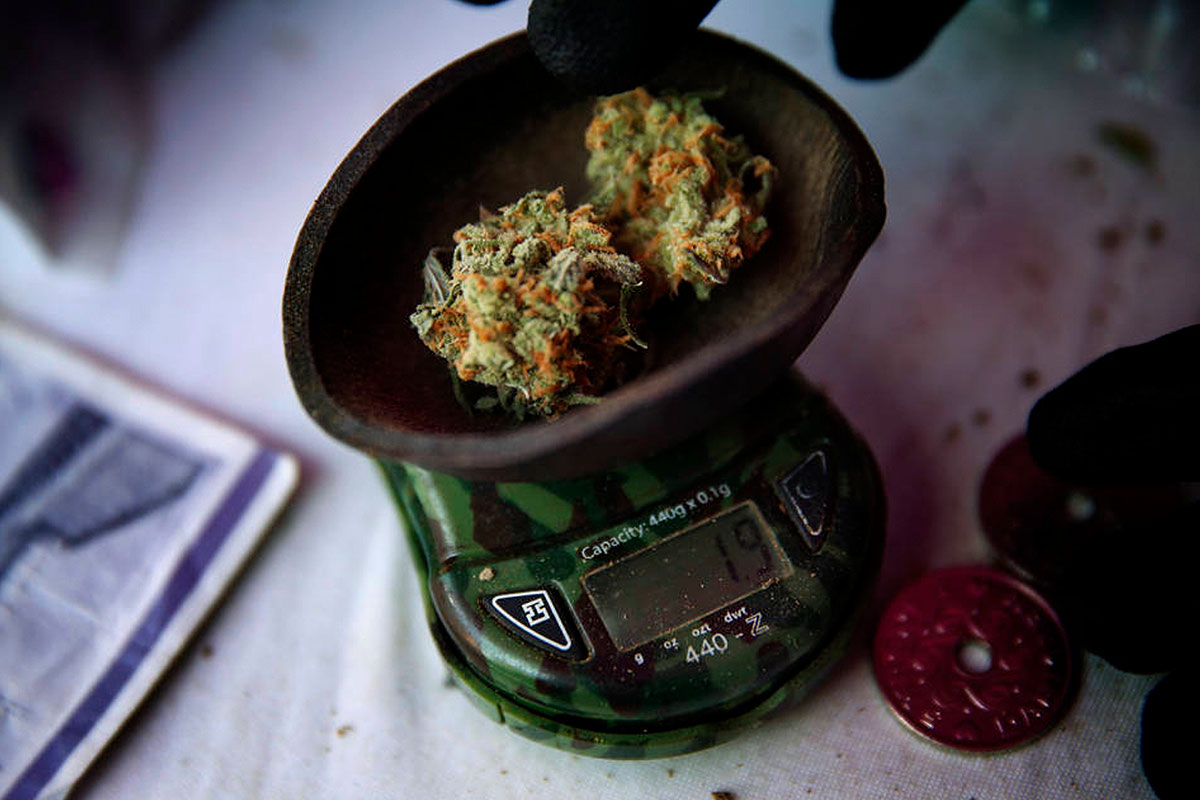
Colored cones — pre-rolled joints with different varieties of marijuana.
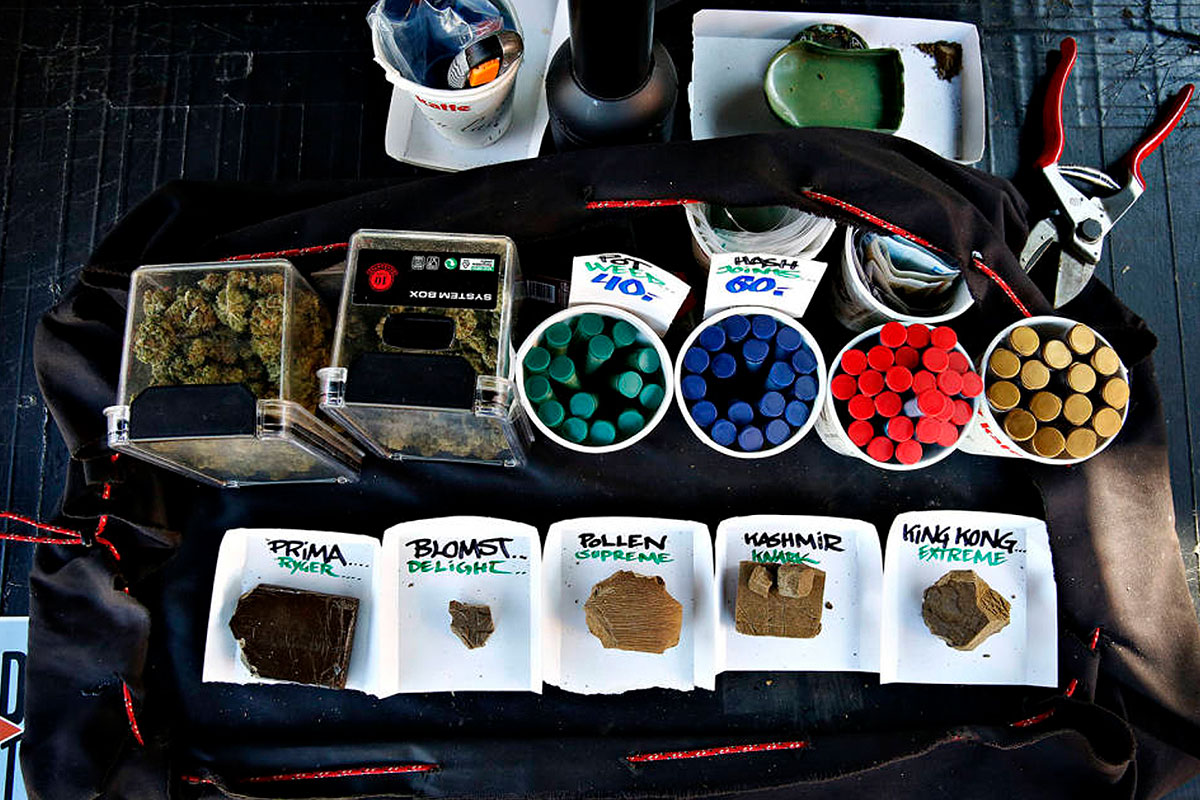
The drug market in Christiania emerged relatively recently, in 2004, and prior to that, the trade was not as open and brazen. Interestingly, since then, the spirit of freedom has somewhat faded: the territory was officially bought from the city authorities, and they even agreed to pay taxes for water and electricity. This likely intensified the confrontation with the authorities.
In Christiania, it is generally rare for things to be quiet. Every few years, someone gets killed here during another clash between gangs, after which the police come, crack down on everyone, demolish the tents, and once again declare that the free city’s days are numbered.
Approximately an hour after the raid, the tents are back in their place, and the police themselves fuck off from Christiania before getting their heads bashed in with a petrified piece of hashish.
In one word, Christiania is no joke. Despite 40 years of Copenhagen’s authority, they haven’t been able to deal with the free community. Perhaps it’s because the residents of Christiania don’t limit themselves to nonviolent resistance and are capable of delivering real beatings. Well, or maybe the authorities themselves are protecting this setup.
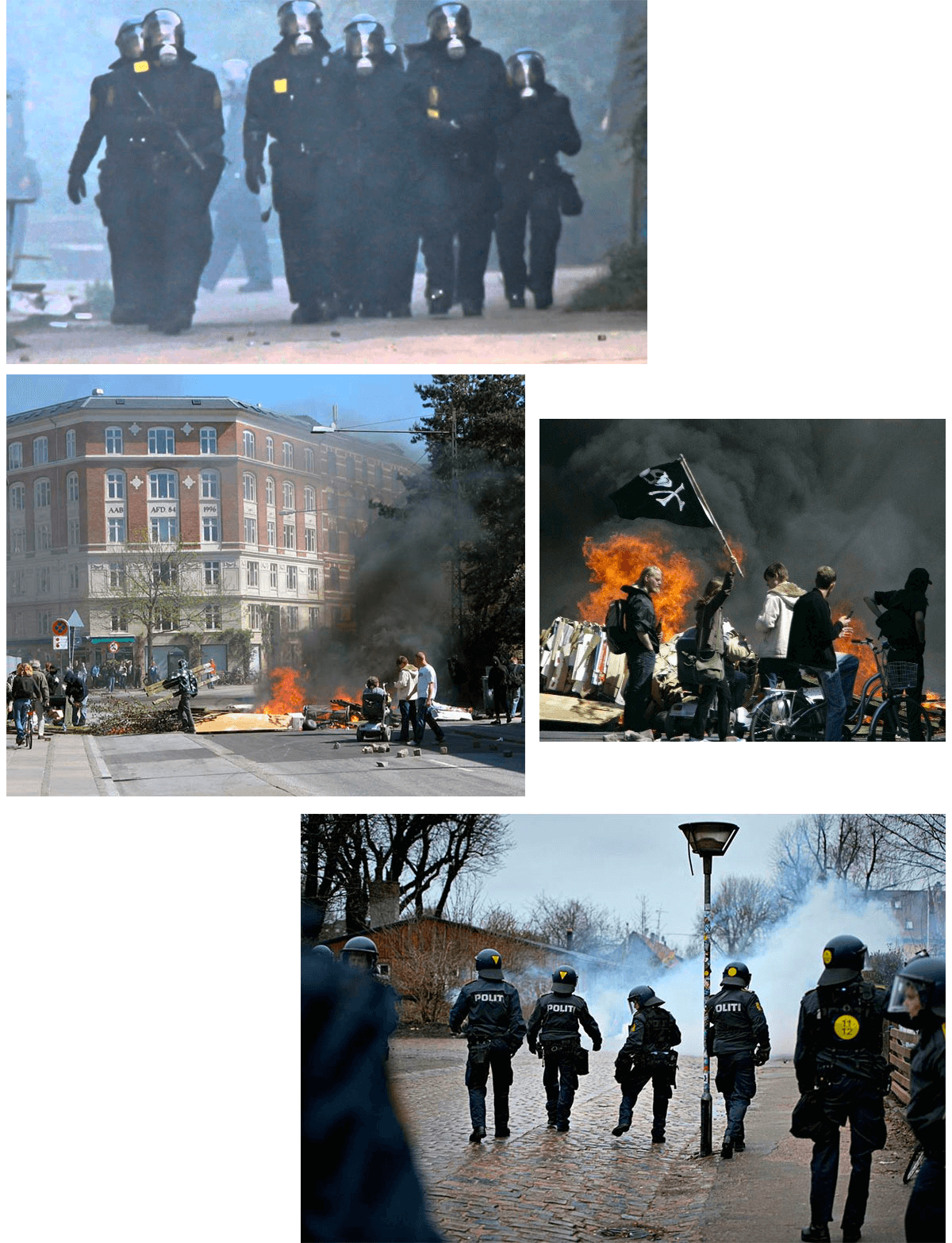
The recent events occurred just two weeks after my visit to Christiania. At the end of August, during a routine apprehension of another dealer, he opened fire, seriously injuring two police officers and one civilian.
They say that this incident marked the beginning of the end for Christiania. “Enough is enough,” the Christianites sighed and declared that they no longer support the free trade of marijuana. The stalls were closed indefinitely, surveillance cameras were installed on Pusher Street, and signs prohibiting photography were covered up.
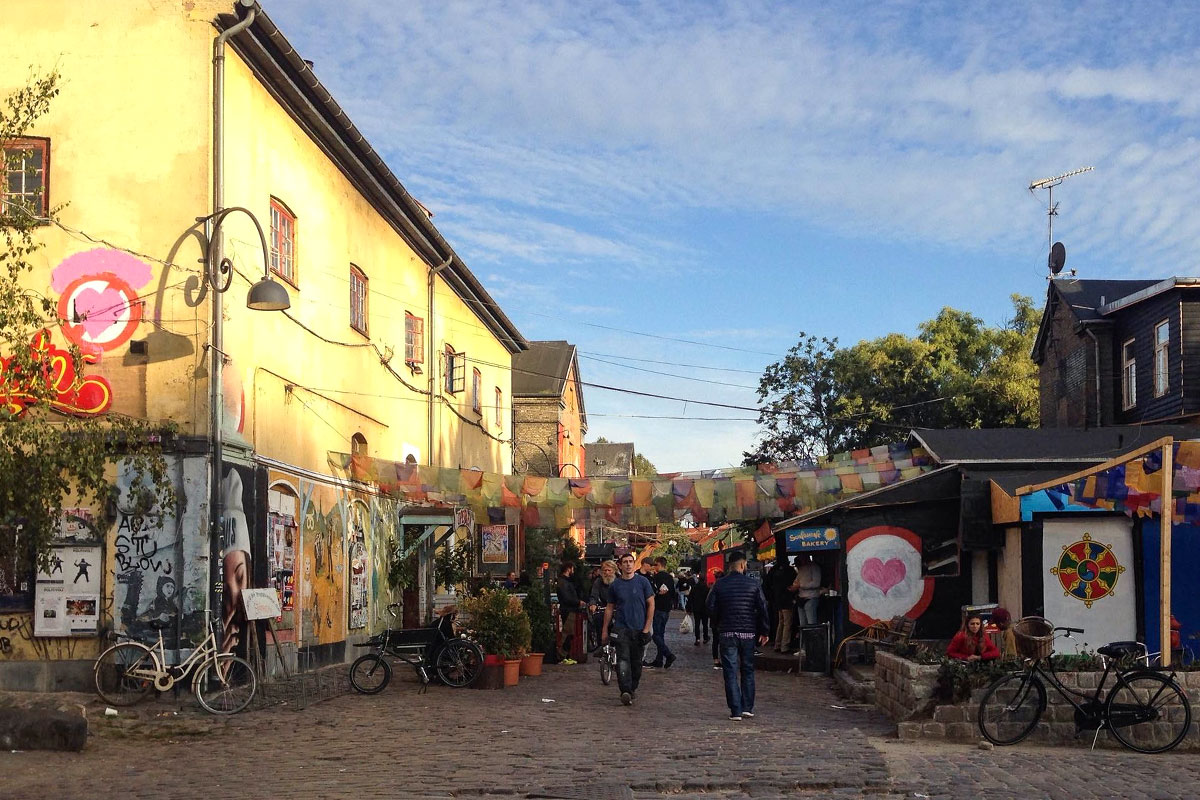
Two months later, drug sales dropped by 75%. In the spring of 2017, the drug market began to reemerge in Christiania, but there is still a sense in the air that this is the beginning of the end.

The example of Christiania is unique. There is no other place in the world with such a powerful and open movement against official authority.
If drugs are being sold in some slums of India or Brazil, even under the police’s protection, it’s not resistance but an underground drug cartel. If it’s relatively easy to enter a certain neighborhood in Spain and find a dealer, it’s also not resistance or open trade, but rather police tolerance and a general understanding of the inevitability of change.
Christiania is a different story. It is a well-organized community that genuinely resists the authorities. In Denmark, including under pressure from neighboring Sweden, there is a relatively strict stance on drugs. Medical use of marijuana has been approved by 90% of surveyed Danes, but purchasing and smoking it can still result in fines. Therefore, even taking the metro out of Christiania is not advisable as one may face consequences. It is somewhat surprising considering the nearby country, the Netherlands, which has a similar spirit and has legalized or decriminalized almost everything possible.
In principle, Denmark’s movement towards the Dutch path is restrained by Sweden in particular. It’s a breeze to come from there to Copenhagen and stock up on drugs: it’s just a one-hour bus ride from Malmö. However, even smoking marijuana for medical purposes is prohibited in Sweden, and overall, their policy promotes zero tolerance.
Therefore, the authorities have long understood that the instability and almost war-like situation in Christiania are a result of their own policies. They also recognize that the experience of neighboring Amsterdam has shown a decrease in crime over several decades. However, as long as Sweden is nearby, they feel compelled to conduct high-profile raids as a show of force.
Meanwhile, as Stockholm discusses obvious reforms and reflects on the past Scandinavian socialism, drug stalls slowly return to Christiania, which were closed last year. Under the flag of a yellow ellipsis on a red field, their state motto proudly states: “You cannot kill us.”
• • •
After everything that has been said, the reader might ask: why bother going to this Christiania at all? Well, you see, reader. They sell cool souvenirs there. Glasses, for example.


